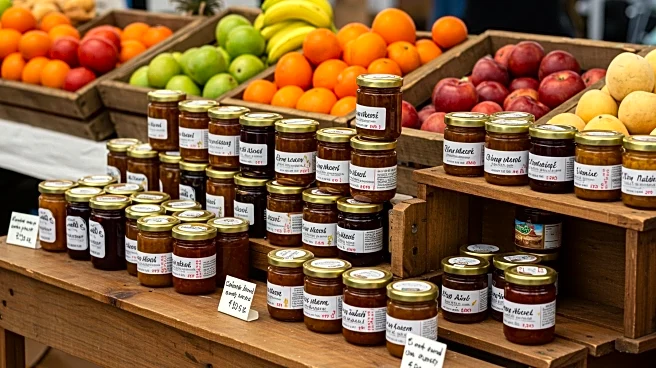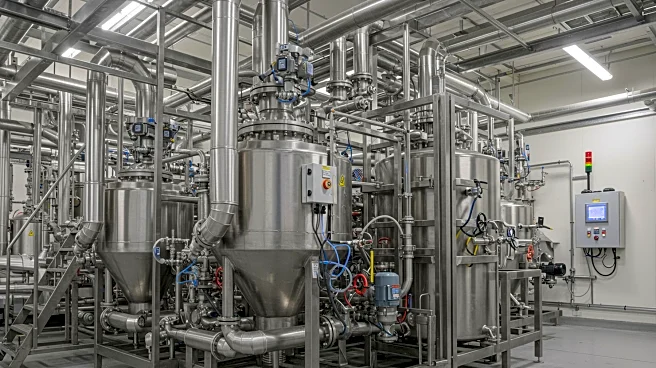What's Happening?
International Flavors & Fragrances Inc (IFF) has launched POWERFRESH® ACE 2000, a fresh-keeping enzyme solution aimed at improving the shelf life and quality of bread in the U.S. market. This innovative product is designed to help industrial bakeries deliver bread with enhanced softness, resilience, and cohesiveness, meeting consumer demands for longer-lasting freshness. According to IFF, the enzyme solution can maintain bread quality for up to 34 days, reducing waste and inventory complexity. The product has shown strong performance in trials across both white and whole-wheat bread applications, offering superior resilience and maintaining structure and visual appeal even at lower dosage levels compared to market alternatives.
Why It's Important?
The introduction of POWERFRESH® ACE 2000 is significant for U.S. bakeries facing rising ingredient prices and increasing consumer expectations for bread freshness. With 60% of consumers expressing willingness to purchase bread marketed as 'fresher for longer,' this solution addresses a critical market need. By improving product resilience and extending distribution capabilities, bakeries can better manage shelf-life targets and align with sustainability goals by reducing waste and optimizing resources. This advancement not only enhances consumer satisfaction but also supports bakeries in maintaining a competitive edge in the industry.
What's Next?
As bakeries integrate POWERFRESH® ACE 2000 into their operations, they may experience improved efficiency and product quality, potentially leading to increased consumer loyalty and brand equity. The solution offers a path to consistent bread quality, whether used in new formulations or to optimize existing ones. IFF's commitment to innovation in food biosciences suggests ongoing developments in enzyme solutions that could further benefit the bakery industry.
Beyond the Headlines
The launch of POWERFRESH® ACE 2000 highlights the growing importance of biotechnology in food production, offering sustainable solutions that meet consumer demands while addressing operational challenges. This development may encourage other food sectors to explore similar innovations, fostering a broader shift towards more efficient and environmentally-friendly production methods.











